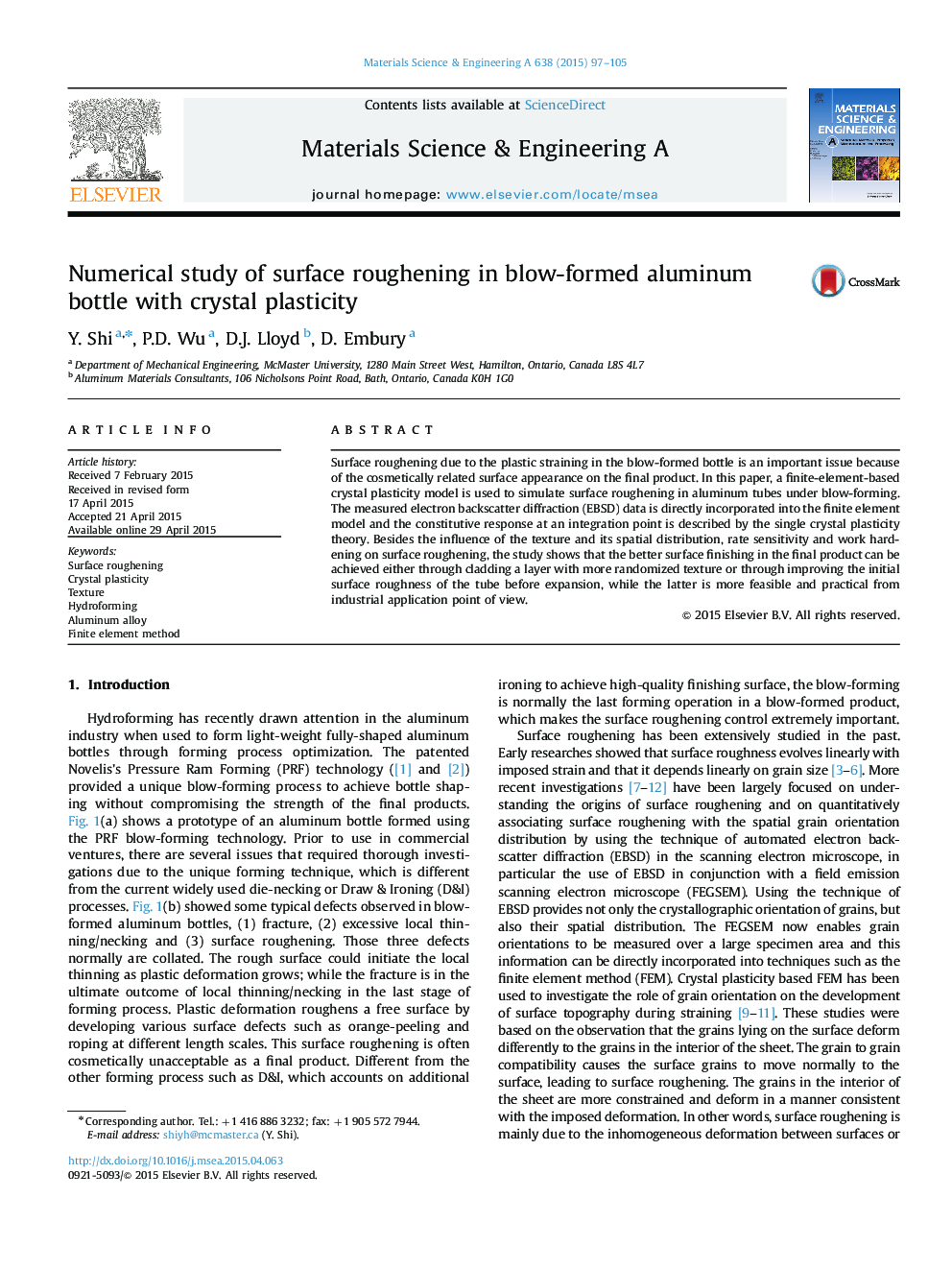| Article ID | Journal | Published Year | Pages | File Type |
|---|---|---|---|---|
| 7977967 | Materials Science and Engineering: A | 2015 | 9 Pages |
Abstract
Surface roughening due to the plastic straining in the blow-formed bottle is an important issue because of the cosmetically related surface appearance on the final product. In this paper, a finite-element-based crystal plasticity model is used to simulate surface roughening in aluminum tubes under blow-forming. The measured electron backscatter diffraction (EBSD) data is directly incorporated into the finite element model and the constitutive response at an integration point is described by the single crystal plasticity theory. Besides the influence of the texture and its spatial distribution, rate sensitivity and work hardening on surface roughening, the study shows that the better surface finishing in the final product can be achieved either through cladding a layer with more randomized texture or through improving the initial surface roughness of the tube before expansion, while the latter is more feasible and practical from industrial application point of view.
Related Topics
Physical Sciences and Engineering
Materials Science
Materials Science (General)
Authors
Y. Shi, P.D. Wu, D.J. Lloyd, D. Embury,
